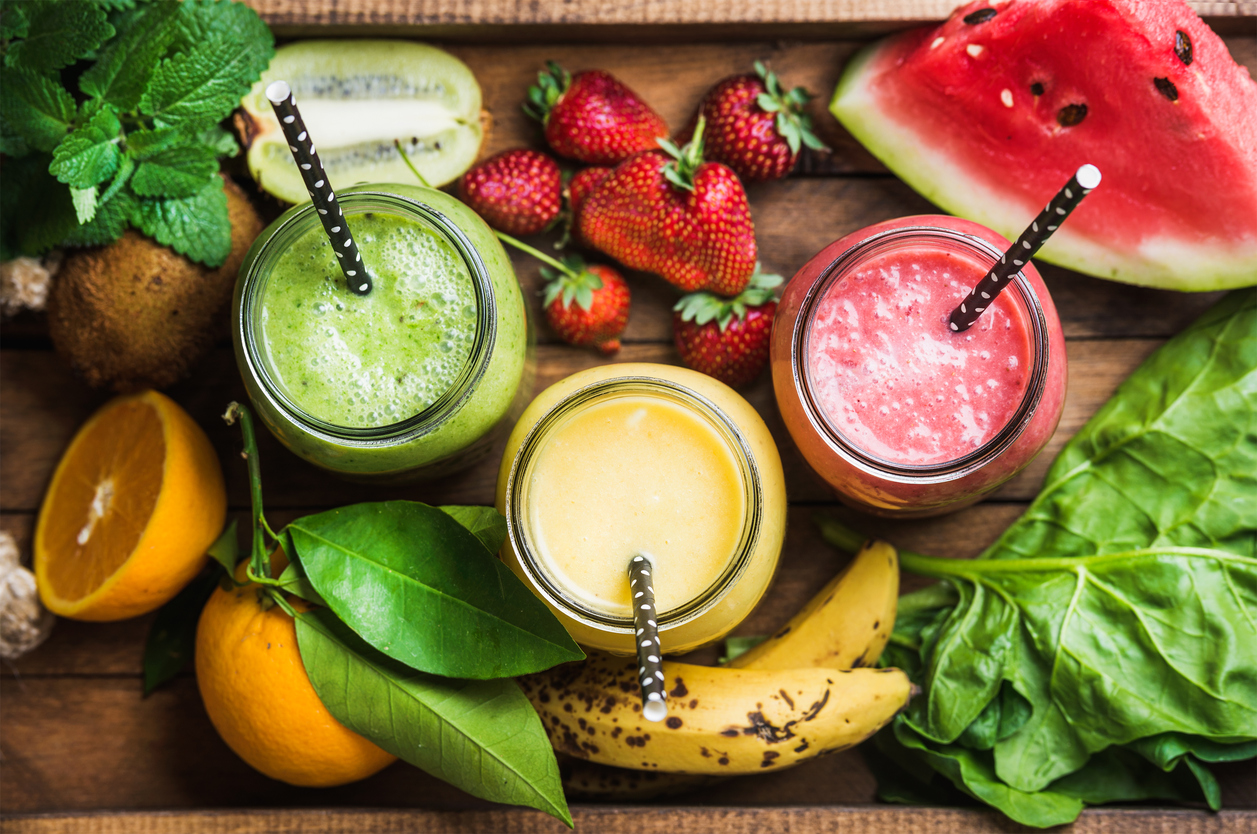Make delicious, packed-with-goodness drinks with these handy juicing tips…
What to look for in a juicer
Not all juicers are created equal, so the first thing you have to ask yourself is how much time are you planning to dedicate to juicing? Also, what kind of quality are you after (super-smooth juice or still a bit pulpy)? What is your budget and how much space do you have to house it?
Essentially there are two types of juicers:
Centrifugal juicers: These use a high-speed spinning blade to cut the fruits and vegetables quickly and the juice is produced in a jiffy. They are usually more budget-friendly, but they can be noisy and extract less juice from the pulp compared to other juicers. The motor also runs at high speeds and heats up the machine, which contributes to overall wear and tear.
Masticating and Cold Press juicers: These juicers work a lot slower as they crush or squeeze the juice out of the fruits and vegetable until you’re left with a bone-dry pulp. There is less oxidization and more nutrients are extracted (compared to centrifugal juicing). They clog easily, so your fruit and veg must be chopped into really small pieces first. Masticating juicers tend to have more parts and can take double the amount of time to clean. Because they are ‘slower’ juicers and don’t produce heat, they tend to last longer.
The perfect juicer has…
• Built-in plug storage.
• A clear juice container that’s large enough to make big batches and also has quantity markings so you can see exactly how much juice you’re making.
• A wide feeder tube that can accommodate bigger fruit and veg pieces (this will save on prep time).
• External pulp ejection, so you don’t have to stop your juicer, open it up and empty it all the time.
• Low noise (juicers with motors, such as centrifugal machines, tend to be on the noisy side).
Making juice
• There’s no absolute ‘best’ fruit or veg to juice as they all have their benefits. The trick is to get good flavour combinations, so the juice at least tastes delicious and not bitter or medicinal. Fruit tends to add the ‘yummy’, while vegetables add more of the ‘healthy’, so always juice more veg and add a little fruit for taste.
• Include a wide variety of fruit and veg in your juices, opting for organic where possible. Make a grocery list of what you need. There are so many recipes available online, in recipe books and via apps that you can easily plan ahead.
• Save time by preparing your ingredients the night before. Wash and chop what you need and store it in the fridge. Get the juicer out and put all the bits together so it’s all set to go in the morning.
• Some quick tips: Line your juicer’s pulp basket with a plastic bag for easier clean-up; if the pulp is still damp once it’s been passed through, juice it again to squeeze out every nutritious drop; drink the juice as soon as possible – there are no preservatives in fresh juice, which is what makes it so awesome; add some ice if you like it chilled.
Storing juice
• Fresh juice really is best drunk fresh, but it can keep most of its nutritional value for 2-3 days if you store it properly. Always store it in the fridge, in an airtight glass container if possible. Also try and fill it to the brim to prevent oxygen from getting in (this can deplete the nutrients).
• It is possible to freeze the juice, but it’s not recommended. You need to put it into the freezer immediately after juicing and then leave it to thaw in the fridge when you want to drink it (within 7-10 days of freezing, no more).
• If you want to enjoy your juice before and after work, make a double batch and then store it in the fridge for later.
• Don’t wait too long to clean your juicer either. Carefully scrub it with warm water and soap and leave it to dry thoroughly. Check the manual to see if it’s dishwasher-friendly.










Leave a Comment